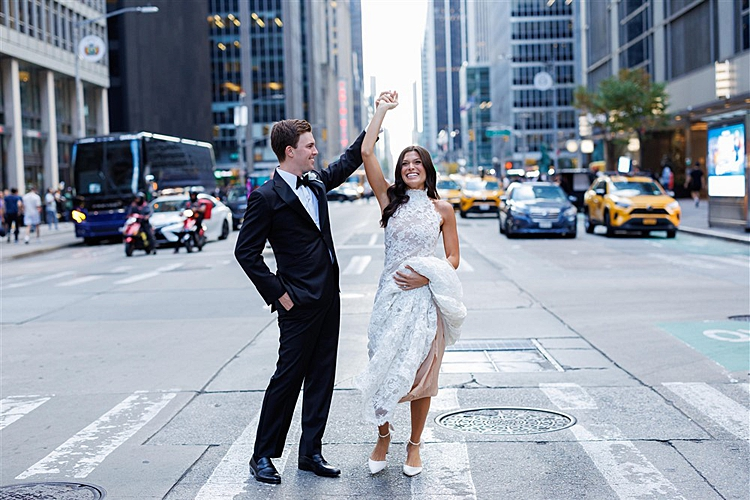What is the K-1 visa?

The K-1 is a nonimmigrant visa that permits a foreign national fiancé/fiancée of a U.S. citizen to travel to the United States to marry the petitioning U.S. citizen sponsor within 90 days of admission to the country.
This visa allows the applicant to travel to the US and to get married, however, the applicant will have only 90 days for the marriage to take effect. After this time, if the marriage has not taken place, the visa will expire and the applicant must return to his/her country of residence. After obtaining K-1 visa your fiancee can be eligible for the adjustment status, which is a transit period before becoming a permanent resident (LPR). DHS and USCIS in the United States are the agencies you will need to address for your wife to undergo this procedure. The children of your wife will be able to obtain K-2 visa.
Who is eligible for K-1 visa?

The American immigration law envisages the Form I-129F to be filled out by your future Russian bride. In order to marry your fiancée legally, you must ensure that there are no circumstances that can disrupt the implementation of this procedure, such as previous marriages, incurable illnesses, prison stints and so forth. It is not a very pleasant task to probe into the past of your future wife, but you will have to do it in order to avoid any complications with the American law. From your side, you also must be free from any such encumbrance that otherwise may serve as the basis for the waiver of your nuptial agreement.
Another stringent rule is that you must have met in person with the foreign citizen who is going to become your wife. There are some vague exceptions from this rule provided by USCIS, but chances are they may not be applicable to your case. These exceptions mainly concern Muslims in whose culture, in some countries, the tradition is that the bride never meets the groom right before the wedding day. You can either visit Russia yourself or invite your spouse-to-be to the US. Russia is a great country, its two most famous cities, Moscow and Saint Petersburg, have a lot to offer even to the most demanding and seasoned tourists, so we would advise you to visit the country. This way you will also be able to pay a visit to your bride’s relatives in order to produce the right impression and to make all the further arrangements that you will deem fit and appropriate for the occasion.
You will also need to be aware about IMBRA regulations and requirements. They are contained in the Form I-129F. The first crucial step is to fill out this form at the nearest USCIS office in your neighborhood or residential area. You need to be aware that this document cannot be filled out at an American embassy or consulate or, for that matter, at a USCIS office located in another country.
What is the process for obtaining a K-1 visa?
The program is a collaborative process involving U.S. Citizenship and Immigration Services (USCIS), U.S. Department of State (DOS), and U.S. Customs and Border Protection (CBP).
Step 1: Classifying Petition – USCIS
- A U.S. citizen (the petitioner) files Form I-129F to petition USCIS to recognize a foreign citizen (the beneficiary) as the person’s fiancé or fiancée.
- USCIS reviews the documents submitted as required evidence that both parties are free to marry; intend to marry within 90 days of the beneficiary’s admission; and, generally, have met in person within two years before filing the petition.
- USCIS conducts a background check for national security, criminal records, and other information on both the petitioner and beneficiary.
- An approved Form I-129F only means that USCIS recognizes the claimed relationship between the petitioner and beneficiary; the approval does not permit the beneficiary to travel to the United States, nor guarantee that DOS will issue a K-1 visa.
- USCIS sends the approved petition to the DOS National Visa Center (NVC), which forwards it to the embassy or consulate where the foreign fiancé/fiancée will apply for the K-1 visa (generally, the embassy or consulate in the area where the person lives).
Step 2: Visa Application – DOS
- The NVC notifies the petitioner when it is time for the foreign fiancé/fiancée to apply for the visa.
- The foreign fiancé/fiancée applies for the K-1 visa at the U.S. Embassy or consulate indicated on the Form I-129F, submitting identity and civil documents, proof of the relationship, as well as a medical exam completed by an approved physician.
- DOS conducts background checks on the visa applicant, including fingerprints and other checks similar to those conducted by USCIS, as well as checks of DOS systems and other interagency databases. A consular interview is also conducted.
- If the DOS consular officer does not find the relationship bona fide, the K-1 visa will be refused, and the K-1 petition will be returned to USCIS.
- The DOS consular officer determines whether any grounds of inadmissibility or other ineligibilities apply (criminal, national security, medical, or other) and whether the applicant is eligible to seek waivers of such grounds.
- The DOS consular officer decides whether to issue the K-1 visa. K-1 visas are valid for up to 6 months and a single entry.
- As with any visa, a K-1 visa does not guarantee admission to the United States.
Step 3: Inspection at a Port of Entry – CBP
- The K-1 visa holder must travel to the United States and seek admission at a port of entry within the validity period indicated on the visa.
- Inspection by CBP at a port of entry includes the capture of biometrics and all relevant systems queries for national security, criminal, and immigration information, verification of identity and travel documents, and an interview.
- If admitted, the K-1 nonimmigrant has 90 days to marry the same U.S. citizen who filed the Form I-129F with USCIS.
Step 4: Adjustment of Status – USCIS
- Following the marriage, the K-1 nonimmigrant may apply for adjustment to lawful permanent resident status by filing Form I-485 with USCIS.
- During the adjudication process, USCIS again conducts background checks on both parties, including fingerprint checks on the foreign spouse, and may interview both spouses.
- If married for less than two years at the time the Form I-485 is approved, the applicant will be granted conditional permanent resident status and issued a Permanent Resident Card (commonly known as a Green Card) valid for 2 years.
Step 5: Removal of Conditions – USCIS
- A conditional Green Card cannot be renewed; conditions must be removed or a conditional permanent resident will lose lawful permanent resident status and be subject to removal from the United States.
- To remove conditions, Form I-751 must be submitted to USCIS within 90 days prior to the end of the two-year conditional permanent resident period. Both spouses file the form jointly, unless an exception applies.
- During the adjudication process, USCIS conducts another background check and a fingerprint check on the foreign spouse, and may interview both spouses.
In the interest of public safety and national security, this document omits operational details of specific background checks.
Good luck taking your bride to the USA
Bryn jacobs Chief Editor






















